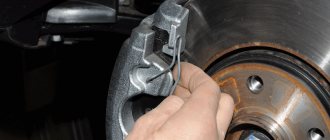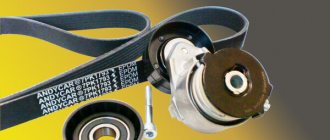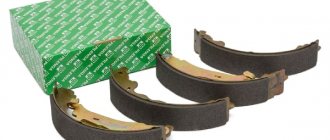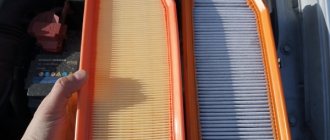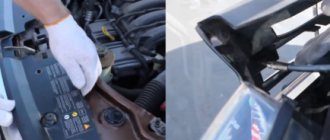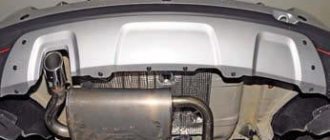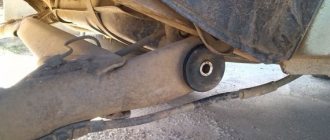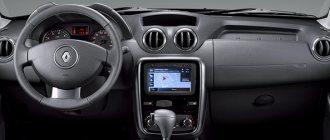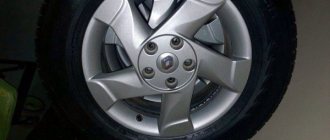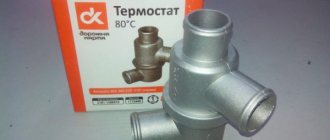09:53 Andrey Ku Main page » Operation
This article will discuss how to properly maintain Renault Duster, fill and change antifreeze, and what problems may arise. The main task of antifreeze is to forcefully cool the engine, which is why the liquid plays an important role. It is necessary not only to monitor its level, but also to check the serviceability of the system. If oil gets into it, serious problems can occur. We will tell you how to replace antifreeze in Duster, as well as the dangers of malfunctions in the cooling system.
Stages of replacing Renault Duster coolant
The operation of changing the coolant includes the steps of draining the old antifreeze. If necessary, the system is flushed. After which, proper filling is necessary to prevent the formation of air pockets.
The instructions are suitable for the following cars, the cooling system of which is identical:
- Renault Duster (Renault Duster Restyling);
- Nissan Terrano 3 (Nissan Terrano III);
- Dacia Duster (Dacia Duster Restyling).
The stages of work will be the same for popular gasoline versions 1.6, 2.0. As well as a new 1.2 petrol engine and a rarer 1.5d diesel modification. All-wheel drive 4x4 or front-wheel drive 4x2 does not matter when replacing.
Coolant drain
The fluid is changed on a cold engine, so before draining the antifreeze, if the car has been running before, you should wait until it cools down. The temperature should not exceed 45°C, this is a normal safety precaution.
Next, we prepare our Renault Duster and directly begin draining the antifreeze:
- Remove the engine protection. To do this, you need to unscrew the 6 visible bolts under the head by 10. Next, from the front bottom of the bumper, unscrew the Torx bolt by 30, bend the bumper a little and get to two more bolts that hold the protection (Fig. 1).
In this way, the most complete drainage of antifreeze from the Renault Duster is achieved. Of course, some part remains in the channels of the cylinder block, but, unfortunately, it will not be possible to drain it. Since the manufacturer did not provide a drain plug on the engine block.
Flushing the cooling system
Most often, the system is flushed when changing the brand of antifreeze. But it is also done to avoid clogging the internal channels of the radiator and the entire cooling system. Therefore, if flakes, sediment or other deposits are found in the drained liquid, then flushing is simply necessary.
For these purposes, it is better to use simple distilled water; resort to the use of special chemicals; it is recommended only in extreme cases. Since special chemical compounds can not only clean the system. But they are also capable of clogging internal channels with these deposits.
For the flushing procedure itself, you will need to connect all the pipes in place, pour distilled water into the expansion tank to the maximum mark. Then start the engine and let it run until the thermostat turns on.
Usually, several such runs are enough for the distilled water to drain clear. After making sure that our cooling system is clean, we can proceed to filling in new antifreeze, while avoiding air locks.
Filling without air pockets
For normal distribution of fluid throughout the Renault Duster system, it is necessary to place the rear wheels on a hill. If this cannot be done, then jack up the rear a little. We put the lower pipe going to the radiator in place and clamp it with a clamp.
Now you can fill in antifreeze, while lowering the hose that was removed when draining and goes to the thermostat a little. We wait until the coolant flows out of it and put it in place, clamping it with a clamp.
To do this, we put a hose on the fitting located on the hose coming from the heater stove, the second end of which is lowered into the expansion tank (Fig. 6).
We start the engine and wait for it to warm up, occasionally accelerating. As soon as air stops coming out of the hose, you can remove it and screw the cap onto the fitting.
When using this method, draining and refilling resulted in 5.5 liters of antifreeze. Which is a good result, considering that the dry system holds about 6 liters.
Recommendations
Comments 20
I made it from an old tool, it’s more convenient with hooks
Great, but to conveniently remove/install the clamp from the lower radiator pipe you need something like this - www.autodoc.ru/man/6906/part/821021
Somehow, the 15-degree spread is too big... Perhaps this is a feature of this thermostat, but I usually rejected such things.
May be. I would like to try this option - www.drive2.ru/l/518034904500404548/
I changed the antifreeze without removing the pipe using a compressor. Fast and clean. A little more than 5 liters are drained.
Tell me in more detail how this is?
I changed the antifreeze without removing the pipe using a compressor. Fast and clean. A little more than 5 liters are drained.
I also wonder how it is?
Replacement frequency, what antifreeze to fill
The manufacturer recommends replacing antifreeze every 90,000 kilometers in diesel, as well as gasoline Renault Duster 2.0 and Renault Duster 1.6.
With low mileage, it is recommended to change it once every 3 years. During production in Russia, Renault Duster is filled with yellow Coolstream NRC Type D antifreeze from the factory. It fully complies with the technical requirements of RENAULT specification 41-01-001/-T Type D.
When replacing, it is recommended that in addition to it, use the original Renault Glaceol RX Type D antifreeze, which is also known under the Elf brand and also has a yellow color.
Catalog numbers for ordering:
- concentrate – 7711428132 1l;
- ready liquid – 7711428133 1l, 7711428129 2l, 7711428130 5l.
How much antifreeze is in the cooling system, volume table
| Model | Engine capacity | How many liters of antifreeze are in the system | Original liquid / analogues |
| Renault Duster; Nissan Terrano 3; Dacia Duster | gasoline 2.0 | 6.0 | Renault Glaceol RX Type D / Coolstream NRC Type D / Total Glacelf Auto Supra |
| gasoline 1.6 | 6.0 | ||
| gasoline 1.2 | 5.8 | ||
| diesel 1.5 | 6.2 |
The importance of timely replacement.
It is necessary to change the antifreeze in a car strictly within the prescribed period. This is explained by the fact that the main component of Renault Duster antifreeze is ethylene glycol. Some more expensive formulations may use propylene glycol. These substances have a low freezing point and practically do not increase in volume when heated. This allows you to use this mixture throughout the year, both in summer and winter at sub-zero temperatures.
But in its pure form, ethylene glycol causes corrosion when interacting with metal parts of the engine. It also strongly oxidizes aluminum parts. Therefore, distilled water is added to each liquid to reduce the concentration of the active substance and special corrosion inhibitors.
There are a large number of different coolant options available on the market. But most of them can quickly become unusable ahead of schedule. Typically, replacement is recommended every 50 thousand kilometers or 2 years, whichever comes first. But if there is a malfunction in the system, exhaust gases or steam may enter, which affects the composition.
Also, Renault Duster antifreeze can lose its properties as a result of a large number of anti-corrosion additives. This is especially pronounced when using Antifreeze - as a rule, this increases the freezing point and accelerates corrosion processes in the engine.
Antifreeze diluted with a large amount of water thickens at low temperatures.
Changing the coolant in Duster
According to the manufacturer's requirements for maintenance of the French car Renault Duster, in order for the car to work properly, the coolant must be replaced at approximately equal intervals of time, or more precisely every 90 thousand kilometers or once every 3 years. All this depends on which of the above described comes first.
Replacing antifreeze is always carried out on a cold engine, and the car must be parked on a special overpass or on a car inspection ditch.
If the power unit is still hot, then it must be allowed to cool, and then the high pressure in the engine cooling system must be relieved. To do this, you simply need to unscrew the cap on the expansion tank.
Using a Torx T-30 wrench, you need to unscrew the 3 screws from below that secure the car bumper to the engine protection.
On the left, use the same key to unscrew the screw of the lower fastening of the subframe and bumper.
The screw must be unscrewed on the right side in the same way.
After the lower edge is bent directly on the front bumper, using a 10mm wrench with an extension, you need to unscrew the 2 bolts of the front mounting on the engine protection.
Using exactly the same tool, you need to unscrew the other bolts that secure the engine protection to the subframe.
In the cylinder block and also in the radiator, special plugs to drain liquid through them were not initially provided. It is necessary to place a wide container, the volume of which is at least 6 liters, under the radiator. To reduce the rate of fluid drainage, first close the cap on the expansion tank tightly.
Using standard sliding pliers from the bottom of the car, you need to compress the ends of the clamp and slide it along the hose.
Disconnect the hose from the radiator pipe and drain the liquid into a container prepared in advance.
To increase the rate of fluid drainage, you should unscrew the cap of the expansion tank.
Remove the cap of the fitting (that is, the release of air from the cooling system), as is known, which is located on the hose that conducts liquid to the heater (especially for clarity of the example, the air filter was removed). After the coolant stops flowing out of the Renault Duster car, you need to put the outlet hose back on the radiator pipe and secure it with a clamp.
What's in it from the factory?
From the factory, Renault Duster is filled with original yellow-green antifreeze. Its original number is 7711428132 and it is called Glaceol RX Type D. The cost of a liter jar is about 500 rubles. This antifreeze is suitable for Duster and Duster II.
This antifreeze is sold as a concentrate that must be diluted with distilled water. The dilution proportion depends on the operating conditions of the vehicle. As a rule, it is diluted 1 to 1 and can be used at temperatures down to -36 degrees Celsius. This is the pour point of antifreeze.
How to dilute Glaceol RX Type D antifreeze
Coolant volume in Duster
The amount of antifreeze in no way depends on what version of the car you have - Renault Duster 1.6 or Renault Duster 2.0; in this case, only the presence of air conditioning or its absence plays a role. So, in a French model with air conditioning, the volume of antifreeze is 5.5 liters, but if your car is not equipped with air conditioning, then the volume is 4.5 liters, that is, when replacing antifreeze, the difference will be 1 liter.
Changing the coolant has some features that need to be taken seriously. For example, depending on the operation of the machine, it is necessary to dilute antifreeze concentrate. But if your region has a harsh winter, then the proportion should be 1 to 1, that is, 1 part distilled water and 1 part antifreeze. Considering that you will need approximately 5 liters of coolant, it is better to buy 3 jars of 1 liter each, and everything that remains can be safely used as topping up, because sometimes it is better to top up than to wait until the need to completely replace the coolant comes up .
Experts say that it is absolutely not necessary to replace antifreeze with the original substance; the original can be replaced with analogues.
As mentioned above, everything is very simple, replacing the coolant is not a complicated procedure. The liquid is poured directly into the cooling system of the engine power unit through an expansion tank specially designed for this purpose, until the liquid flows out through a small air outlet fitting. After filling, you need to tighten the fitting cap and do the same with the expansion tank cap. That's it, the antifreeze replacement is complete.
After the procedure has been completed, when the coolant has been replaced, it is necessary to start the engine. As the power unit warms up, the lower (that is, outlet) radiator hose must be completely cold for some time, and then heat up quite quickly, which will tell you that the fluid has begun to circulate directly in a large circle. Now you can be sure that the antifreeze replacement was successful. Wait until the cooling fan turns on, then stop the engine. The engine must cool down, after which you need to check the antifreeze level; if necessary, it needs to be topped up to normal.
Determining the type of liquid by appearance.
Elf's concentrate is light green in color before it is mixed with distilled water. After it is diluted it acquires a yellowish tint.
On Russian-assembled cars, the liquid is orange.
Antifreeze used in Renault Duster 1.6 and 2.0 liter engines.
When choosing antifreeze, you should give preference to Coldstream ready-mix. But if this is not possible, then it must be diluted according to the diagram above.
- To do this, it is better to use Renault Duster antifreeze with carboxylate additives G12
- G12+ fluid is not recommended for replacement
- Class G11 is created on a silicate base, so it is strictly forbidden to mix it with other types.
For a complete replacement, 4.5 to 5.5 liters are required, depending on the availability of air conditioning. When using a concentrate, mix only with distilled water.
What coolant is used for Duster
Some drivers do not know what kind of antifreeze is poured into Renault Duster. The manufacturer uses Coolstream NRC antifreeze, which meets the technical standards of the Renault specification.
When replacing, it is recommended to use the original Renault Glaceol RX fluid, which is also produced under the Elf brand and is yellow in color.
If it is not possible to purchase the original, look for a replacement, taking into account the following recommendations:
- Any brand of coolant containing ethylene glycol and carboxylates is suitable for Renault Duster.
- It is not recommended to use antifreeze class G12+. Filling the G11 type composition also leads to failure of the power unit components. This product is made on a silicate base, which is not suitable for Duster engines.
The antifreeze volume is 4.5-5 liters, depending on the presence of a climate control system. If it is necessary to add a small amount of liquid, you can use distilled water, which can be purchased at a car store.
ELF EVOLUTION 900 SXR 5W40
High-quality engine oil ELF EVOLUTION 900 SXR 5W40 is designed specifically for diesel engines of passenger cars and is the recommended oil for Renault Duster with 1.5 dCi turbodiesel. It guarantees excellent protection against wear of engine parts, especially the gas distribution system, in all operating conditions. Special detergent additives ensure engine cleanliness. The thermal and oxidative stability of ELF EVOLUTION 900 SXR 5W40 maintains its characteristics for a long time and allows the use of this engine oil for Renault Duster 1.5 diesel with extended replacement intervals (in accordance with the recommendations of the automaker). ELF EVOLUTION 900 SXR 5W40 meets Renault RN 0700 and RN 0710 specifications.
You can choose oil for Renault Duster using the selection service on our website.
Recommended engine oil for Renault Duster depending on modification:
Replacing antifreeze
To change the fluid in the cooling system, you need to drain the old material and rinse the cavities. After this, new antifreeze for Renault is poured, avoiding the formation of air bubbles.
Draining and flushing the system
The work is carried out on a cooled engine, so the running engine is allowed to cool before removing the antifreeze. The temperature of metal surfaces should not exceed 45°C. Then the car is brought into the inspection hole and the following steps are performed:
- Remove the motor protection. To do this, use a 10mm head to unscrew 6 external bolts. At the bottom of the bumper, remove the Torx screw and bend the trim. Underneath there are 2 more bolts that secure the protection.
- Next, disconnect the lower wide radiator pipe. There is no drain plug here. To dismantle the clamp and pipe, use a special key. If there is no tool, the washer is compressed with pliers and moved along the radiator outlet. After disconnecting the pipe, liquid should flow. To increase the draining speed, unscrew the filler tank cap.
- The next step is to remove antifreeze from the stove radiator. To do this, remove the cap of the air release fitting and connect the hand pump. They begin to pump, monitoring the process of antifreeze leakage.
- To remove residues, disconnect the hose leading to the thermostat. After this, the system is purged.
Using this method, you can completely drain the coolant from your Duster. Some material remains in the cylinder cavities and cannot be removed.
The manufacturer did not install a drain plug on the engine block. When using a different brand of antifreeze, flushing the system is required. It is also performed to clean the radiator channels.
Distilled water is used during the procedure. Special chemicals are rarely used. Washing is performed as follows:
- Connect the previously disconnected pipes and pour water into the expansion tank. Start the engine, allowing it to run until the thermostat activates.
- After warming up the engine, increase the speed to 3 thousand. Turn off the power unit and drain the liquid in the standard way. The steps described above are repeated 3-5 times.
Filling with new fluid
To evenly distribute the antifreeze in the system, you need to lift the rear of the car with a jack. After this, perform the following steps:
- Install the lower radiator pipe and secure it with a clamp.
- Start replacing the coolant. The thermostat hose, unscrewed when draining, is lowered. When the antifreeze begins to flow out, the tube is put in place and secured.
- Release the air so that there are no plugs in the system. To do this, put a hose on the stove fitting, the free end of which is placed in the expansion tank. Start the engine, warm it up, occasionally pressing the gas pedal. After the air has stopped coming out of the hose, put a cap on the fitting.
During the procedure, the level of antifreeze in the expansion tank is monitored. When it decreases, air will enter the system.
Checking the quality of work done
After filling and removing air, the engine is started for a few minutes. After turning on the fan, turn off the engine and allow it to cool. Check the coolant level in the expansion tank and, if necessary, add antifreeze to the max mark. If there are no leaks at the connection points, the motor protection is returned to its place.
How to drain antifreeze?
You only need to work on a cold engine, so if you have been traveling, you will have to wait at least 45 minutes. The work proceeds as follows:
- Using a Torx T-30 wrench, you need to remove the engine protection.
- It also unscrews the subframe and bumper screws. You need to start on the right side.
- After this, you can move the lower edge of the bumper to the side, which will allow you to get to the screws holding the front part of the engine compartment protection. The protection will be removed completely.
If you don't want to have the hassle of getting to the drain plug, you can disconnect the hose under the radiator. Please note that a lot will spill out, so it is recommended to place a bucket or large basin under the car. There is no need to unscrew the expansion tank cap. You need to remove the lower pipe: it is held in place by a clamp that can be easily opened with pliers. After everything has poured out, do not forget to put the pipe back in place. Refilling of new antifreeze occurs through the expansion tank.
Changing antifreeze for Renault Duster
Antifreeze is one of the process fluids whose purpose is to remove excess temperature from a running engine. The critical boiling point of antifreeze is +110 degrees. Antifreeze also has the task of lubricating the internal surface of the Renault Duster cooling system. The service life of vehicle components depends on the quality and condition of the coolant.
When to change antifreeze on Duster? According to the maintenance regulations for the Renault Duster, the coolant must be changed when the mileage reaches 90,000 kilometers or every 3 years. Depends on the occurrence of a particular event.
But every car owner must constantly monitor the level and quality of the coolant and determine their shift periods.
Cooling system malfunctions: troubleshooting
The cooling system consists of several elements, the failure of which can seriously affect the operation of the engine. For example, if a car starts to overheat for no reason, then the reason most often needs to be looked for in the thermostat. The same device is to blame if the engine, on the contrary, does not reach operating temperature. In addition, the following problems may appear:
- The radiator may become clogged with debris.
- Oil appears in antifreeze.
- Antifreeze leak.
- Loose pump belt, failure.
- Damage to the fan or its incorrect operation due to debris from the street.
- The appearance of antifreeze in the form of drips in the engine compartment.
If you notice any problem, you must carefully check the unit in which it appeared and, if necessary, replace it. If you are unable to do this yourself, contact a service station.
Replacing antifreeze on Renault Duster
When replacing coolant, car owners take two routes:
- Contact a specialized center.
- Carrying out the replacement yourself.
Antifreeze for Renault Duster is class G12. Liquids of class G12+ and G11 cannot be used. They have a completely different composition. Their use can lead to malfunctions of the power unit.
Self-replacement is a simple procedure, but requires certain skills and appropriate tools.
But before you start changing the coolant, you will need to eliminate faults in the cooling system (if any).
Self-replacement steps:
- Prepare sufficient coolant volume. The volume of the Renault Duster cooling system is 4.5 to 5.5 liters. One liter more is used if there is air conditioning.
- If the car was running before replacement, you will need to wait until the engine cools down to a temperature of at least 45 degrees. The coolant is changed only on a cold engine.
- Remove the Renault Duster engine protection.
- Prepare an empty waste drain container with a volume of 10 liters and place it under the radiator.
- Relieve pressure in the cooling system. Pressure is released by slowly unscrewing the cap of the expansion tank. Unscrew the cap carefully because there may be excess pressure in the system. After releasing the pressure, tighten the cap of the expansion tank tightly.
- Drain the antifreeze. The Renault Duster crossover does not have a special drain plug. To drain, you will need to disconnect the lower hose from the radiator. The clamp for securing the pipe is compressed with pliers and moved along the pipe. After disconnecting the pipe, the coolant will begin to flow into the substituted container. For faster draining, unscrew the cap of the filler tank.
- To bleed air from the cooling system, unscrew the cap of the fitting (bleeding air from the cooling system) located on the fluid drain hose from the heater radiator. The cap is located next to the air filter.
- After draining all the liquid, install the pipe in place and secure it with a clamp. Screw on the fitting cap.
- If necessary, flush the cooling system with a special flush. Flush the system if it is necessary to switch to another type of coolant.
- Fill with new antifreeze. Fill through the expansion tank or through the top hole of the radiator.
- Start the car and let it run for 5-10 minutes. After the fan operates, turn off the engine and wait until it cools down. Check the fluid level in the expansion tank. If it is not enough, add until the coolant is within the min and max marks.
- If an air lock has formed in the system, remove it using the fitting cap.
- Check for leaks at the connection points.
- Install the Renault Duster power unit protection in place.
Filling volumes and brands of oils for Renault Duster
Filling/lubrication point
Name of oil/liquid
What and how much oil to fill in Renault Duster
The fuel tank can hold no more than 60 liters of fuel. The manufacturer recommends filling with AI-92.
The quality of work of a French crossover directly depends on timely maintenance. According to the manufacturer's recommendations, the lubricant should be changed every 15 thousand km or once a year. The frequency depends on which comes first. Recommended fluid for ELF EVOLUTION SRX gasoline units. Can be replaced with Mobil 1. For diesel engines - ELF Competition STI. Viscosity requirements - 5w40. Filling volume - from 4.5 to 5.4 liters.
The official schedule for replacing coolant is 90 thousand km. If three years comes earlier, a lubricant update will also be required. The volume is 5.5 liters. If you have air conditioning, you will need 1 liter less fluid. GLACEOL RX (type D), a solution of antifreeze concentrate in distilled water, does not contain amines, is used.
Despite the fact that the manufacturer does not provide for changing transmission oil and fills it for the entire service life of the car, it is still worth replacing. It is better to do this during the first 100 thousand km, then every 80,000. ELF Tranself TRJ 75W-80 or ELF Tranself NFJ 75W-80 lubricant is suitable for these purposes.
Before each drive or when the engine overheats, you should check the fluid level in the expansion tank. The coolant reservoir is located in the left rear part of the engine compartment in the direction of travel of the machine. To check the level, place the machine on a level surface. The power unit should be cold when checking.
The MIN and MAX marks are indicated on the wall of the expansion tank. On a cold engine, the coolant should be between these marks. When the engine warms up to operating condition, the level is slightly above the maximum value. The expansion tank cap must be closed to avoid burns. The motor must cool to below 60 °C.
When the level drops to the minimum mark, you need to unscrew the cap of the expansion tank and add antifreeze. Drips of the mixture are removed with a rag, and the lid of the expansion tank is closed.
A decrease in the level of antifreeze in the expansion tank indicates a leak in the cooling system. Therefore, it is necessary to check all elements for leaks and repair the damage.
The reasons for replacing antifreeze on a Renault car include:
- Replacement frequency;
- Fluid leak or engine overheating;
- Power unit repair.
There are two ways to change antifreeze - contact a car service or perform this process yourself.
Draining the liquid and flushing the system
Changing the refrigerant yourself is not a difficult process if you follow safety precautions and have the right tools. After placing the car on an inspection hole or overpass, wait for the power unit to cool down. Antifreeze change is carried out only on a cold engine. Draining old coolant from the Renault Duster reservoir is performed in the following sequence:
- Remove the engine protection;
- Place a 10-liter drain container under the radiator;
- Slowly unscrew the cap of the expansion tank to relieve pressure. After resetting, screw the lid tightly;
- Disconnect the lower hose from the radiator. The clamp that secures the pipe is compressed and shifted towards it. Drain the antifreeze by unscrewing the cap of the filler tank;
- Unscrew the cap of the fitting near the air filter to bleed air from the cooling system;
- After draining the antifreeze, put the pipe in place, secure it with a clamp, and screw on the cap.
Check the condition of the waste fluid and, if necessary, flush the system. Flushing is also carried out when switching to another coolant. Rinse the system with a special solution, pouring it into the expansion tank.
The engine must be warmed up before flushing. With the engine turned off, the system is filled with the product, after which the unit should be started and run for 30 minutes. Stop the engine and drain the flushing agent. It is recommended to repeat the washing procedure 2-3 times or until the drained solution is clean.
Filling with new antifreeze
By pouring a new mixture, the replacement of coolant on Renault Duster is completed. The system must be filled with 4.5 liters of refrigerant. If you have air conditioning, you will need 5.5 liters of fluid.
After draining and washing, you can fill in new antifreeze through the expansion tank or radiator hole. After filling the cooling system with new antifreeze, start the engine and leave for 10 minutes. After turning on the fan, turn off the motor and wait for cooling.
The next step is to check the antifreeze level in the tank and add as necessary. At this stage, replacing the coolant in Renault Duster 2.0, subject to all recommendations, has been carried out correctly.
When choosing antifreeze, you should follow the recommendations of the car manufacturer. For Renault Duster, you should purchase original Glaceol RX Type D antifreeze, which is filled at the factory. If this liquid is not available, you can use other brands of antifreeze for Renault Duster class G12 or G12+.
After three years, the dealer said it was time to change the coolant. Tell me, is it necessary to change? Giving the leader or replacing the antifreeze is not difficult and you can do it yourself. He also said to change the brake fluid Mileage 30,000
At TO-45 they didn’t tell me anything about a replacement
This is what Renault says
Brakes are a must. Antifreeze - also needed. It’s not even a regulation, it’s a feature of operating any car.
Our antifreeze is carboxylate and will last 5 years. And the brake fluid seems to be changed every two years (at least on all previous cars it was done that way).
Well, this is the ideal option! Everything will last as long as it needs to! On another car this year I changed the antifreeze - I couldn’t find one, it has the moronic designation G12, I found only G11 and G11+, Obninsk (SINTEK), I filled it up. It will last for 3 years, then I will replace it again. Or more often - and then there is no need to rinse.
The entire brake system is hydroscopic. (i.e., the ability of a material to absorb and condense water vapor and humidity from the air) So it must be changed within the estimated period of its operation. Even if the car does not drive and is stationary.
BAK
, Read attentively !
+100500 something like an air cushion is formed, the pedal simply falls to the floor. It gets tired with a few presses on the pedal (with ABS it will go away on its own), but it’s better not to let it get to the point of sin, I don’t like it without brakes.
Well, I’m thinking: should I change the coolant now, with an eye to reasonable savings during the economic crisis?
In the car maintenance book issued upon purchase, the replacement period is indicated as “3 years or 90 thousand km”, the coolant with Renault “Type D” approval was initially filled. On the website of a large coolant manufacturer, the Renault “Type D” approval is indicated as “for the entire life of the car” - https://www.cool-stream.ru/pravda_ozh#8 In the same place, Renault’s “Type D” approval is classified as a type of coolant - carboxylate. On the website of another major manufacturer of coolants, the service life of carboxylate coolants is indicated as “provides up to 250,000 km” - https://obninskorgsintez.ru/catalog/i. ELEMENT_ID=152 I didn’t see a radical change in the color of the coolant in my car - in the expansion tank the color from top to bottom goes from light green to yellow, before, in my opinion, it was light green everywhere). I don't see any precipitation there.
I am leaning towards the option of annual analysis with postponing replacement until at least a mileage of 90 thousand km. I am interested in the opinion of people who have already decided to postpone the replacement after 3 years - how long will you tolerate this replacement and what criteria will you use to catch the moment of immediate replacement?
Renault Duster 4x4 manual transmission Silver › Logbook › Installing a “hot” thermostat and replacing antifreeze.
Taking into account the fact that the thermostat installed four years ago under warranty fell ill, I decided to try installing a hot thermostat TX192D KHECHT/MAHLE with an opening temperature of 92°C. And in one go, replace the antifreeze, which is already more than six years old, and flush the cooling system. For washing I bought this LAUREL
Which is poured into old antifreeze. By the way, if you don’t have such a tool
then don’t even try to change the antifreeze on the Duster yourself. In addition, to ventilate the cooling system, you need a hose with an internal diameter of 7 mm and a length of 60 cm. And if you, like me, decided to install a non-original thermostat, then be prepared for the fact that you will have to modify the seat.
I did this with a Dremel, but I think you can also use a round file (but it will take much longer)
In the morning I poured the wash into the expansion tank and drove towards the garage with the pit. Well, there is no point in describing the procedure further, since it has been described more than once. The only thing is that removing the hose from the lower radiator pipe is hemorrhoids, but putting it back on and installing a clamp is hemorrhoids in a cube
